The 1939 Mercury Dime value varies significantly based on mint mark, condition, and errors. Coins without mint marks (Philadelphia), “D” (Denver), or “S” (San Francisco) have different values. Circulated 1939-S dimes range from $4.60-$17, while uncirculated examples can exceed $1,000. High-grade specimens with “full bands” are most valuable—MS-67 coins sold for over $4,000, and MS-68 grades reach $13,000. Error coins and unique features like special toning can add thousands to the value. Condition grading is crucial: MS-61 uncirculated coins start around $15, while premium grades command significantly higher prices among collectors.
A 1939 Mercury dime sitting in your drawer might be worth anywhere from a few dollars to several thousand, depending on where it was minted and its condition. While millions were produced across three facilities in 1939, the difference between a common circulated piece and a gem uncirculated specimen with full bands can represent a price gap of over 300 times. Understanding mint marks, grading standards, and valuable errors separates casual finders from informed collectors who know exactly what they’re holding.
Understanding 1939 Mercury Dime Production and Rarity
The United States Mint produced Mercury dimes at three facilities in 1939, creating distinct varieties that collectors pursue today. Philadelphia struck 67,749,321 pieces without a mint mark, making it the most common variety by far. Denver contributed 24,394,000 dimes marked with a “D,” while San Francisco produced 10,540,000 bearing an “S” mint mark. These marks appear on the reverse side, just to the left of the fasces bundle.
Despite Philadelphia’s massive mintage, condition rarity drives value more than pure numbers. The San Francisco issue, though produced in lower quantities, offers the most dramatic price range. A worn 1939-S in Good-4 condition trades for approximately $4.60, representing little more than silver melt value. That same date in Mint State-67 with Full Bands sold for $4,312 at Heritage Auctions in 2019, demonstrating how preservation and strike quality create value.
The Denver mint issue occupies middle ground in both mintage and typical pricing. Most 1939-D dimes enter the market in circulated grades, with About Uncirculated examples trading around $12 to $18. The Philadelphia no-mint-mark variety, despite its abundance, commands premiums in gem grades because high-quality survivors remain scarce relative to the millions that entered circulation.
1939 Mercury Dime Value by Mint Mark and Grade
Grading standards determine the vast majority of value differences in Mercury dimes. The Sheldon Scale, ranging from 1 to 70, provides numerical precision that directly correlates with market prices. For circulated 1939 dimes, condition makes modest differences, but uncirculated grades create exponential jumps.
1939 No Mint Mark (Philadelphia) Value Chart:
| Grade | Value Range |
|---|---|
| Good-4 | $2.80 – $3.20 |
| Fine-12 | $3.10 – $3.50 |
| Extremely Fine-40 | $4.20 – $5.00 |
| About Uncirculated-50 | $7.00 – $9.00 |
| Mint State-63 | $18.00 – $28.00 |
| Mint State-65 | $42.00 – $65.00 |
| Mint State-67 | $185.00 – $350.00 |
| Mint State-67 Full Bands | $850.00 – $1,400.00 |
1939-D (Denver) Value Chart:
| Grade | Value Range |
|---|---|
| Good-4 | $3.00 – $3.40 |
| Fine-12 | $3.20 – $3.80 |
| Extremely Fine-40 | $4.50 – $5.50 |
| About Uncirculated-50 | $9.00 – $12.00 |
| Mint State-63 | $22.00 – $35.00 |
| Mint State-65 | $52.00 – $78.00 |
| Mint State-67 | $320.00 – $550.00 |
| Mint State-67 Full Bands | $1,100.00 – $2,000.00 |
1939-S (San Francisco) Value Chart:
| Grade | Value Range |
|---|---|
| Good-4 | $4.60 – $5.20 |
| Fine-12 | $5.00 – $6.00 |
| Extremely Fine-40 | $7.50 – $9.00 |
| About Uncirculated-50 | $13.00 – $17.00 |
| Mint State-63 | $28.00 – $42.00 |
| Mint State-65 | $68.00 – $110.00 |
| Mint State-67 | $580.00 – $950.00 |
| Mint State-67 Full Bands | $2,200.00 – $4,500.00 |
| Mint State-68 Full Bands | $12,000.00 – $15,000.00 |
The “Full Bands” designation dramatically increases value across all mint marks. This term refers to the horizontal bands wrapped around the fasces on the reverse. When all three bands show complete separation with no merging or weakness, grading services add the FB designation. A 1939-S in Mint State-67 without full bands might sell for $580, while the same numerical grade with FB commands $2,200 or more—nearly four times the price.
Critical Error Varieties Worth Hunting
Several error types affect 1939 Mercury dimes, with some commanding substantial premiums over standard issues. Unlike deliberately created varieties, these resulted from mechanical malfunctions or die deterioration during production.
Repunched Mint Mark Errors: Both Denver and San Francisco dimes occasionally show doubled mint marks where the punch was applied twice in slightly different positions. A 1939-D with strong repunching visible under 10x magnification can add $25 to $75 to base value in circulated grades, and $150 to $400 in uncirculated condition. The 1939-S repunched mint mark is scarcer, with premium examples bringing $300 to $600 in Mint State-65.
Off-Center Strikes: Misaligned planchets create partial designs. A 1939 dime struck 5% to 10% off-center with full date visible trades for $45 to $85 in Fine condition. Dramatic 25% to 40% off-center examples with readable dates command $200 to $450. A 1939-S struck 50% off-center sold for $875 at Stack’s Bowers in 2021, demonstrating how extreme errors attract bidding competition.
Die Cracks and Cuds: Advanced die deterioration creates raised lines (cracks) or blank raised areas (cuds) on finished coins. Minor die cracks add $5 to $15 in typical circulated grades. Major cuds affecting 10% or more of the coin’s surface can bring $100 to $250. A 1939 Philadelphia dime with a massive cud covering Liberty’s head sold for $385 in 2020, highlighting how dramatic visual impact drives error premiums.
Broad Strikes: When the retaining collar fails, the planchets spread beyond normal diameter during striking. These create oversized, thin dimes with weak rims. A 1939 broad strike typically sells for $75 to $150 regardless of mint mark, with premium uncirculated examples reaching $300 to $500.
Double Die Varieties: Though less common in 1939 than some years, minor doubled die obverses exist showing doubling in “LIBERTY” or the date. These subtle varieties add $15 to $40 in circulated condition when clearly visible. Stronger examples in uncirculated grades can command $100 to $250 premiums.
Identifying Full Bands and Grading Key Points
The Full Bands designation separates common uncirculated dimes from premium pieces, but identifying legitimate FB coins requires understanding what grading services examine. The fasces on the reverse features three horizontal bands wrapping around the vertical rods. Complete separation means distinct dark lines (grooves) appear between all three bands across their entire visible length, particularly in the center where weakness typically occurs.
Examining potential FB candidates requires strong lighting at an angle and at least 5x magnification. The center band proves most critical—partial merging or even a small section where the middle band connects to the upper or lower band disqualifies the coin from FB designation. Approximately 5% to 8% of uncirculated 1939 Mercury dimes qualify for Full Bands, making this feature genuinely scarce rather than merely desirable.
Strike quality varies significantly by mint. San Francisco produced notably fewer Full Band specimens in 1939 due to worn dies and heavy production demands. Philadelphia strikes show higher FB percentages, particularly from fresh dies early in production runs. Denver falls between these extremes, with FB rates improving during mid-year production when die maintenance improved.
Beyond bands, overall eye appeal influences prices within grade levels. Coins with original mint luster, minimal contact marks, and appealing toning command premiums. A 1939 Mint State-65 with dull gray surfaces might sell at the low end of its range ($42), while a blazing white example with strong luster and minimal marks brings top dollar ($65) or exceeds guide prices.
Where 1939 Mercury Dimes Fit in Collection Strategies
Building a complete Mercury dime set requires all three 1939 varieties, making these coins essential rather than optional. Their moderate pricing in typical grades makes them accessible entry points for new collectors, while the challenge of locating gem Full Band examples keeps advanced collectors engaged.
For type set collectors assembling representative examples of major U.S. coin designs, any 1939 Mercury dime in Extremely Fine or better condition suffices at minimal cost. Spending $4 to $6 acquires a presentable circulated example displaying all design elements clearly. This approach prioritizes design representation over investment potential.
Date and mint mark collectors pursuing complete Mercury dime sets face different calculations. Acquiring all three 1939 varieties in Extremely Fine costs approximately $16 to $20 total, representing one of the more affordable dates in the series. Upgrading to About Uncirculated raises costs to $29 to $38 for the set, still reasonable compared to key dates like 1916-D or 1942/41 overdate varieties.
Serious collectors building registry sets or investment-grade collections target Mint State examples, particularly Full Band specimens. A three-coin 1939 set in Mint State-65 Full Bands costs approximately $2,000 to $2,600, with the San Francisco issue comprising over 60% of that total. This investment approach prioritizes condition rarity and long-term appreciation potential over simple completion.
Authentication and Purchase Recommendations
Third-party grading through Professional Coin Grading Service (PCGS) or Numismatic Guaranty Company (NGC) provides essential protection when purchasing 1939 Mercury dimes valued over $100. These services encapsulate coins in tamper-evident holders after authenticating and grading them, eliminating concerns about counterfeits or grade misrepresentation.
For circulated examples under $20, raw (ungraded) purchases from reputable dealers pose minimal risk. Examining coins for mint marks, checking magnetic attraction (genuine silver dimes show no magnetism), and verifying weight around 2.50 grams identifies obvious fakes. Authentic 1939 dimes measure 17.9mm in diameter with reeded edges containing approximately 134 reeds.
When pursuing Full Band designations, purchasing already-certified specimens saves frustration. Submitting raw coins hoping for FB designation succeeds only 5% to 8% of the time, meaning submission fees often exceed value gains. A certified 1939-S MS-65 FB at $2,200 costs more upfront than a raw MS-65 at $70, but eliminates the uncertainty and potential losses from unsuccessful designation attempts.
Online auction platforms like Heritage Auctions and Stack’s Bowers provide price discovery through realized prices archives. Searching “1939 Mercury dime” with filters for grade and variety reveals actual transaction prices rather than optimistic dealer asking prices. This research identifies fair market ranges before committing to purchases.
Maximizing Value When Selling Your 1939 Mercury Dimes
Timing and venue selection significantly impact returns when selling these coins. Local coin shops offer immediate payment but typically pay 60% to 75% of retail value on common dates in circulated grades. A 1939-D in Extremely Fine-40 retailing for $5 might bring $3 to $4 from local dealers who need profit margins for overhead and inventory risk.
Online marketplaces like eBay expand potential buyer pools but require photography skills, accurate descriptions, and fee calculations. Selling a raw 1939-S in About Uncirculated directly to collectors might net $15 after a $1.50 insertion fee and 12.9% final value fee on a $17 sale. This represents better returns than dealer offers but demands more effort.
Certified coins in Mint State grades warrant consignment to established auction houses. Heritage Auctions, Stack’s Bowers, and Legend Auctions reach serious collectors willing to pay strong prices for quality material. A 1939 Philadelphia MS-67 Full Bands consigned to a major auction might realize $1,200 after 15% buyer’s premium and 10% seller’s commission, netting approximately $1,020 to the consignor—far better than dealer offers around $650 for the same coin.
For common circulated examples worth under $10 each, selling individually rarely makes economic sense. Assembling complete sets or accumulating quantities of 20 or more coins justifies selling efforts. A lot of 25 mixed-date circulated Mercury dimes including several 1939 issues might sell for $85 to $120 online, providing better returns per coin than individual sales after fees.
Understanding your 1939 Mercury dime’s specific mint mark, grade, and any error characteristics transforms guesswork into informed decisions whether you’re buying, selling, or simply appreciating what you own. Start by checking for that tiny mint mark, examine those fasces bands under magnification, and compare your coin’s condition against certified examples in online archives—the few minutes invested often reveal values far exceeding expectations for these 85-year-old survivors of American commerce.
You may be interested:
- 1859 Indian Head Penny Coin Value Complete Errors List And No Mint Mark Worth Guide For Collectors
- 1911 V Nickel Coin Value Guide Complete Errors List And No Mint Mark Worth Today
- 1902 Dime Coin Value Complete Errors List With O S And No Mint Mark Worth Guide
- 1788 Quarter Coin Value Complete Guide Errors List And D S P Mint Mark Worth Revealed
- 1776 To 1976 Bicentennial Half Dollar Coin Value Complete Errors List And What Your D S And No Mint Mark Coins Are Actually Worth
- 1990 Penny Coin Value Errors List How D S And No Mint Mark Pennies Are Worth Thousands Of Dollars

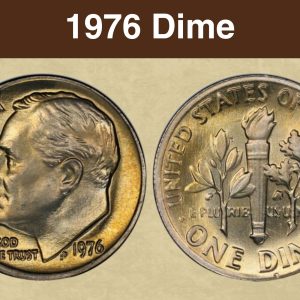
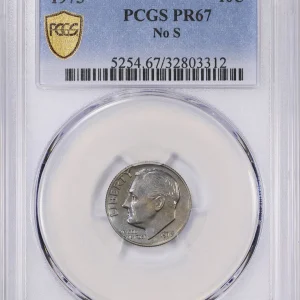
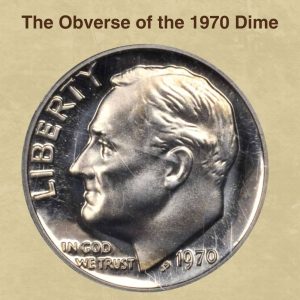
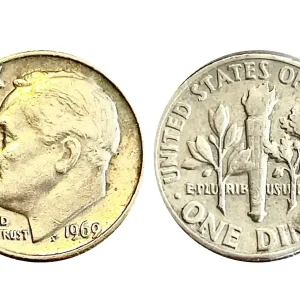
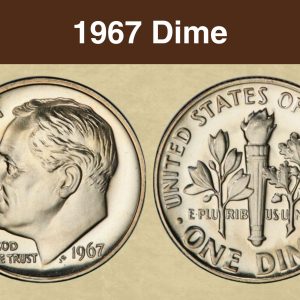
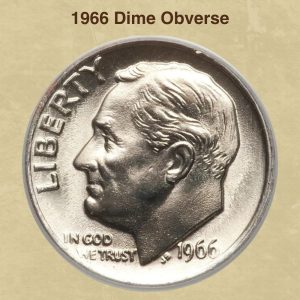
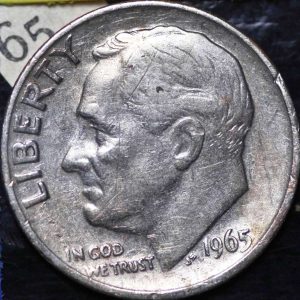
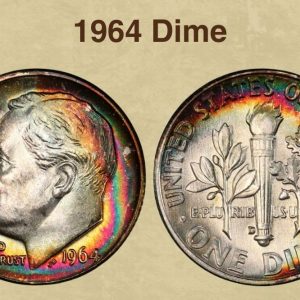
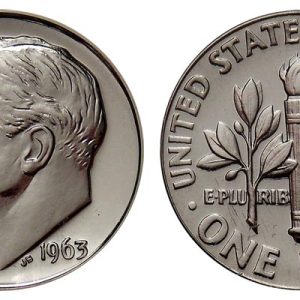
How much is a 1939 S Mercury dime worth?
A 1939-S Mercury dime’s value ranges from about $4.60 in circulated condition to over $1,000 for high-grade examples. Factors like the coin’s condition (grade), the presence of “full bands” on the design, and errors significantly impact its price.
What errors to look for on dimes?
When looking for valuable dime errors, check for coins with a double die obverse, where features like the date or motto are doubled, as well as errors in the striking process, such as an off-center strike or a broadstrike where the collar is missing. Other errors include missing or clipped planchets, missing clad layers, or striking through debris like cloth (a strikethrough error ).
What is a 1939 dime with wings on the head?
Design: The obverse (front) features a profile of Liberty wearing a winged Phrygian cap. The reverse (back) shows a fasces (a bundle of rods with an axe) and an olive branch, symbolizing unity, strength, and peace. Name: While its formal name is the Winged Liberty Head dime, it’s commonly called the “Mercury dime” because many people mistook the winged figure for the Roman god Mercury. Composition: This dime is 90% silver and 10% copper. Minting: The United States Mint produced this coin from…
What is the most wanted Mercury dime?
The most sought-after Mercury dimes are the 1916-D, the 1921, the 1921-D, and the 1942/1 overdate varieties. Other key dates include the 1926-S, 1919-D, and 1945. Value depends heavily on a coin’s condition, with higher-grade coins commanding significantly higher prices.